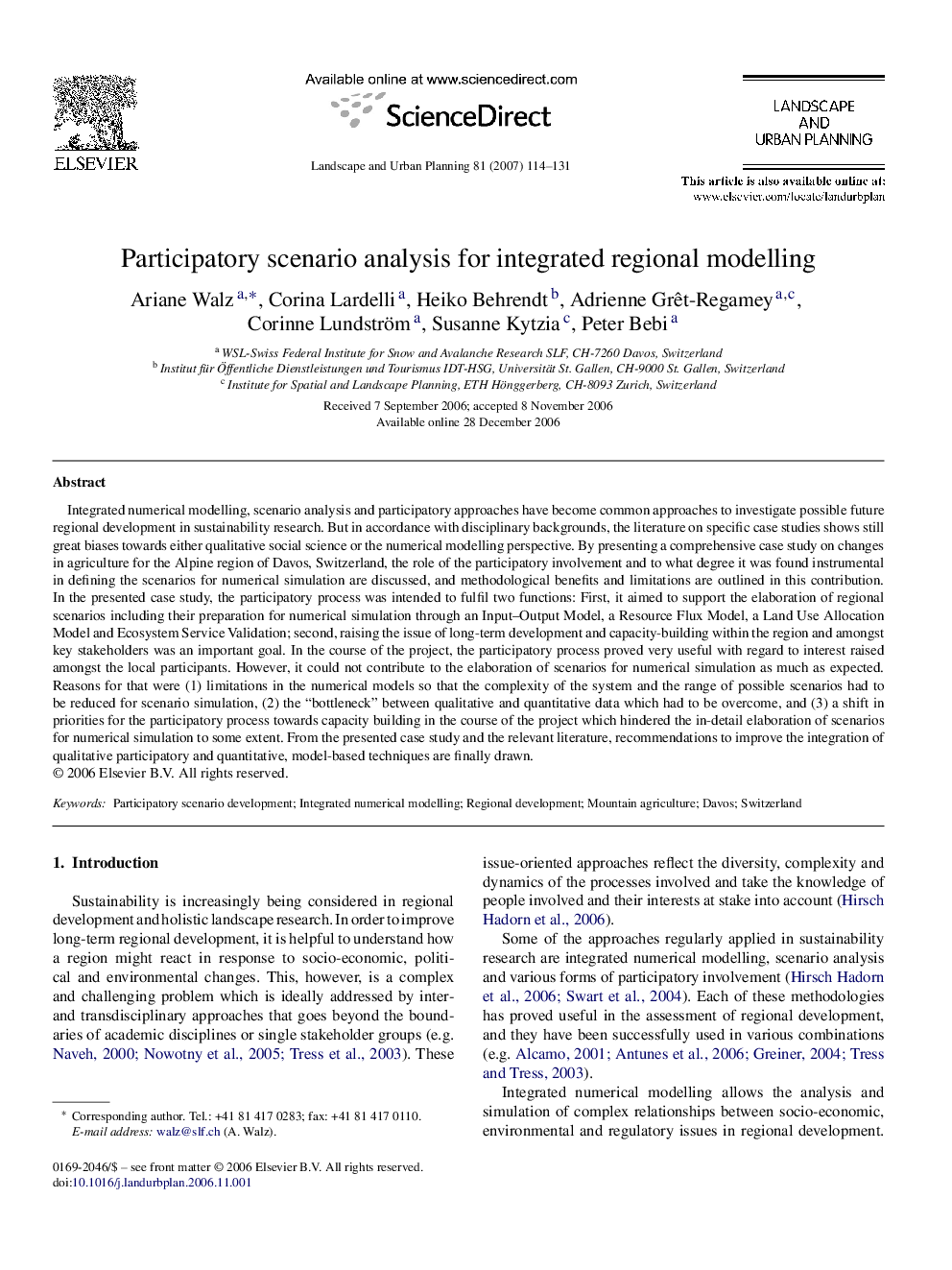| Article ID | Journal | Published Year | Pages | File Type |
|---|---|---|---|---|
| 1050564 | Landscape and Urban Planning | 2007 | 18 Pages |
Integrated numerical modelling, scenario analysis and participatory approaches have become common approaches to investigate possible future regional development in sustainability research. But in accordance with disciplinary backgrounds, the literature on specific case studies shows still great biases towards either qualitative social science or the numerical modelling perspective. By presenting a comprehensive case study on changes in agriculture for the Alpine region of Davos, Switzerland, the role of the participatory involvement and to what degree it was found instrumental in defining the scenarios for numerical simulation are discussed, and methodological benefits and limitations are outlined in this contribution. In the presented case study, the participatory process was intended to fulfil two functions: First, it aimed to support the elaboration of regional scenarios including their preparation for numerical simulation through an Input–Output Model, a Resource Flux Model, a Land Use Allocation Model and Ecosystem Service Validation; second, raising the issue of long-term development and capacity-building within the region and amongst key stakeholders was an important goal. In the course of the project, the participatory process proved very useful with regard to interest raised amongst the local participants. However, it could not contribute to the elaboration of scenarios for numerical simulation as much as expected. Reasons for that were (1) limitations in the numerical models so that the complexity of the system and the range of possible scenarios had to be reduced for scenario simulation, (2) the “bottleneck” between qualitative and quantitative data which had to be overcome, and (3) a shift in priorities for the participatory process towards capacity building in the course of the project which hindered the in-detail elaboration of scenarios for numerical simulation to some extent. From the presented case study and the relevant literature, recommendations to improve the integration of qualitative participatory and quantitative, model-based techniques are finally drawn.
